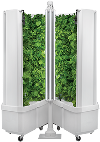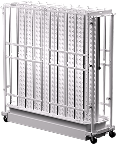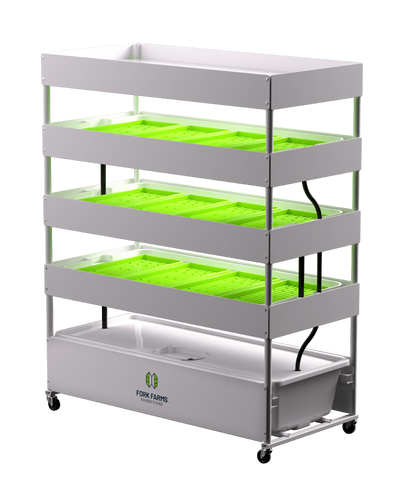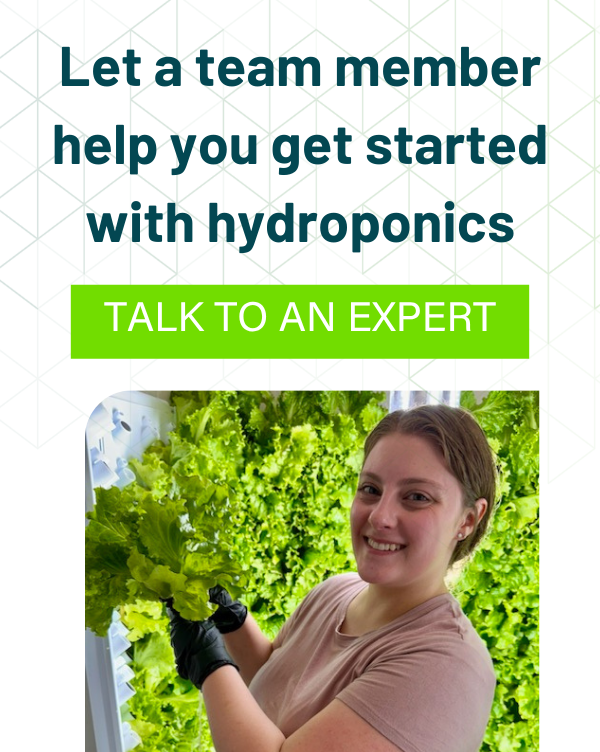Selecting the Right Hydroponic Lights for Your Indoor Farm
At its core, hydroponics is based on a simple concept where plants are grown in a controlled, soilless environment. When done properly, this method of gardening provides countless benefits, everything from greater precision and faster yields to higher growth, conservation of natural resources, and even educating kids on sustainability and science.
Like any good project, farmers need to have both a solid plan–one that accounts for available grow space, type of plants, and any budget considerations–and the right equipment. All the know-how in the world won’t do much good if you haven’t carefully thought out the essentials like trays, timers, nutrient solutions, and, of course, hydroponic lights, which we’ll focus on here.
Hydroponic Lighting Considerations
One of the earliest lessons most of us learned about gardening is that all plants need light to grow. It gets a bit trickier, though, when you consider that not all plants require the same amount–or even the same type–of light to flourish.
Somewhat surprisingly, hydroponic farmers often don’t fully appreciate the role lighting plays on their yield and growth, and how variations in a single area like light intensity, or duration, can affect results. But the good news is that potential mishaps can be avoided with some pointed research and a sound understanding of your crops’ needs.
Because they’re part of the controlled environment we referenced earlier, hydroponic grow lights are designed to closely mimic the natural light that plants require for photosynthesis, which we know is the conversion of light energy into chemical energy. They do this by delivering a precise mix of light wavelengths and intensities that allows plants to thrive.
Curious for more? Check out Unleashing Success: Avoid Common Mistakes in Indoor Hydroponic Gardening.
Colors of Light
Almost without exception, LED lights will be the go-to source for your hydroponic system. These lights feature a wide range of colors that closely simulate sunlight and help plants grow efficiently indoors. However, when it comes to color and your plants’ growth, there’s more to it than meets the eye.
To your crops, it matters which colors you use for their lighting. For example, blue light is typically used to stimulate vegetative growth; red light is used for flowering and fruiting.
Wavelengths of Light
What’s more, plants don’t just use one wavelength of light. They use a mix of all the different colors of light in the visible spectrum. Here is where we note that wavelength is inversely related to energy levels, where the shorter wavelength translates to higher energy, and vice versa.
Because different plants prefer lights with different wavelengths, getting that mix right is critical. And knowing the optimal wavelength(s) for the occupants of your garden will be key to their development.
Duration of Light Cycle
Another important consideration is the duration of your light cycle. You’ve got to make sure your plants are exposed to the right amount of light. Too much or too little and your plants will start to show signs of distress, like discolored leaves or elongated stems, respectively.
Distance of Light to Plants
Growers also must place the lights at the right distance from their plants. Your light source should be neither too close (which can cause leaf burn and/or stunted growth) nor too far (where you can get elongated stems and branches) from your crops. You’ll want to regularly check and adjust this distance, too, as your plants continue to grow.
Biomimicry in the Design
Generally speaking, hydroponic grow systems are designed to provide a controlled and uniform distribution of light. This includes both day and nighttime lighting; timers will help ensure your plants get the right amount of light day in and day out.
This approach is based on a concept known as biomimicry, where we (humans) create systems inspired by nature and natural solutions. Studying and adapting naturally occurring systems and models allows us to create better, more environmentally friendly, and sustainable solutions. An example of biomimicry in design can be found in the Flex Farm, an indoor, vertical hydroponic grow system. The white-enclosed surface of the Flex Farm allows for the light rays to reflect, efficiently conserving energy and utilizing less lighting while still providing the plants with the optimal amount of light.
How to Choose Wisely
Understanding both the importance of lighting and the factors to consider when setting up your system will go a long way toward ensuring your hydroponic garden is up to snuff. This knowledge will also help guide you toward the right equipment. Again, this is not an area to be taken lightly.
As you explore which essential equipment to buy, you’ll want to account for the specific needs of your plant(s)–temperature and nutrient requirements in addition to lighting. Take the time to research product quality, reliability, customer reviews, and reputable manufacturers.
Is future growth an option? If so, add scalability to your list. And don’t forget about ease of use and maintenance: You’ll want equipment that includes user-friendly features and easy cleaning. Will it be simple enough (or a hassle) to find spare parts? And how’s their tech support after purchase?
Then there’s cost. You’ll have to balance quality with affordability, so do some price comparisons. And don’t forget to factor in long-term operational costs.
Want to learn more? Check out the 4 Steps to Finding the Perfect Indoor Hydroponics System!
Rule of Thumb
While much of the attention here has been paid to hydroponic lighting, it’s a good rule of thumb to thoroughly research each piece of necessary equipment–trays, pumps, timers, pH meters, and nutrient solutions in addition to grow lights–to ensure your system is optimized to produce a cornucopia of fresh, delicious food.
Is the Flex Farm right for you?
Connect with an expert member of our team and let’s work together to bring your growing experience to life.























